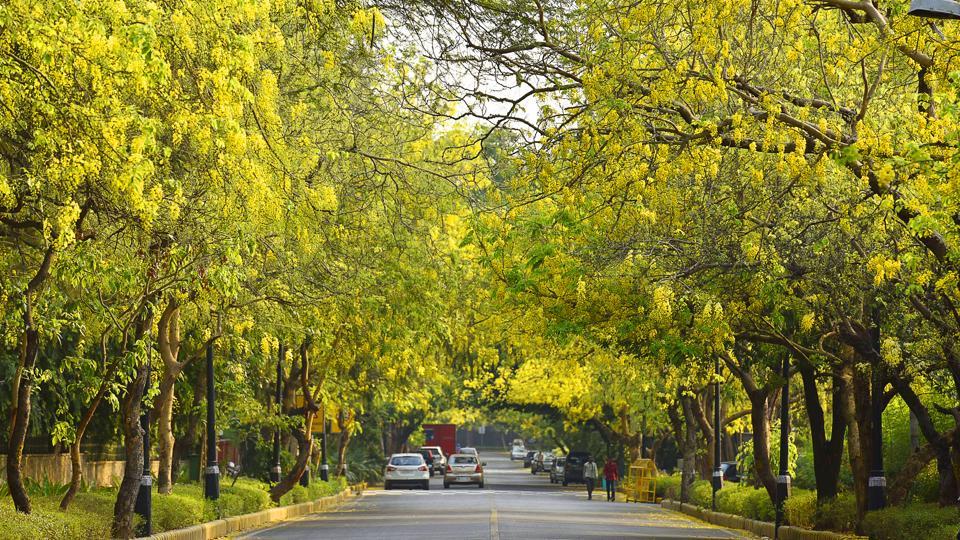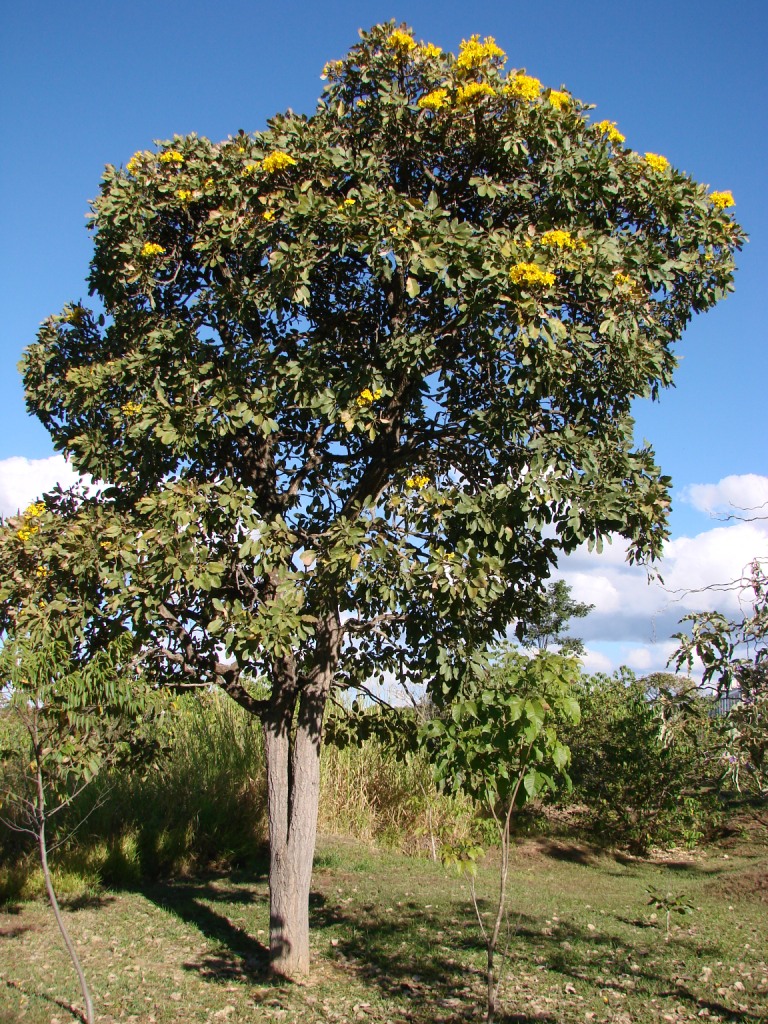With the advancement of summer season, colors drift from the ground to the eye level, flowering shrubs and further to the skyline with beautiful blooming trees. some of the trees flaunt nature’s floral elegance with Jacaranda(blue), Gulmohar(red) and Amaltas(yellow) being one of the most stunning trees adding magic and beauty to the months of April-May-June. Jacaranda is the first to flower followed by Gulmohar and Amaltas. the lovely color scheme of blue-red-yellow of the trio is an aesthetic treat to the eyes. as the summer comes early, the erratic weather results in advance flowering and nature’s beauty can be seen at its best.
Jacaranda’s Charm:
Jacaranda mimosifolia or locally known as ‘Neeli Gulmohar‘ is a medium sized, deciduous tree with finely cut foliage and showy tubular, bell-shaped mauve-blue flowers. it can be planted along roadsides as avenue tree, in clusters in public gardens and as standalones in a home garden. the tree does not form a very dense canopy. this allows diffused light to pass through it, thus making it possible for grass to grow under it. though the tree is native to south America, it is planted almost everywhere around the world. The tree grows to a height of up to 20 m (66 ft.).[6] Its bark is thin and grey-brown, smooth when the tree is young but eventually becoming finely scaly. This plant has won the Royal Horticulture Society’s Award of Golden Merit. For strength, stability and maintaining its shape. pruning the tree to form one main trunk.

The Dance of Gulmohar:
Delonix regia, popularly known as ‘Gulmohar’ is a large, deciduous fast-growing tree. its beauty has inspired poets, writers and artists. the orange-red flowers of the tree remain in bloom from the end of April till August. thereafter, the seed pods are formed. these are green and flaccid. gradually, these turn dark brown and woody and remain hanging on the trees for a long time. the shedding of leaves takes place in November when the leaves turn yellow and tree remains bare till the end of march. this period is then again followed by flowering. In many tropical parts of the world it is grown as an ornamental tree and in English it is given the name royal poinciana. The flowers of Delonix regia are large, with four spreading scarlet or orange-red petals up to 8 cm (3 in) long, and a fifth upright petal called the standard, which is slightly larger and spotted with yellow and white. The tree is planted in India, where it is referred to as the May-flower tree, Gulmohar or Gul Mohr[7] in West Bengal, Odisha, Bangalore. In addition to its ornamental value, it is also a useful shade tree in tropical conditions, because it usually grows to a modest height (mostly 5 m or 15 ft., but it can reach a maximum height of 12 m or 40 ft.) but spreads widely, and its dense foliage provides full shade. In the Indian state of Kerala, royal poinciana is called kaalvarippoo which means “the flower of Calvary“. the tree needs abundant irrigation during bloom.

The Amaltas Avenue:
Cassia fistula or ‘Amaltas’ is a fast-growing, deciduous medium sized perennial tree with spreading branches. its fragrant yellow flowers start blooming from mid-may, giving a pleasant soothing summer feel. they make for an excellent avenue trees especially for beautification. the continuous fall of the flowers leads to the formation of a yellow carpet underneath the tree giving it a romantic feel. it is planted in groups of three or five in big gardens. The species is native to the Indian subcontinent and adjacent regions of Southeast Asia. it is also commonly known as Golden Shower. In Ayurvedic medicine, the golden shower tree is known as aragvadha, meaning “disease killer” and is said to have many medicinal benefits with proper prescription. The golden shower tree is the state flower of Kerala. The flowers are of ritual importance in the Vishu festival of Kerala.

Queen’s Flower:
Lagerstroemia flos-reginae, also known as ‘Queen’s flower’ is often planted in combination with the Amaltas. its dark green leaves and contrasting mauve flowers mellow down the contrasting brightness of the golden-yellow flowers of the Amaltas. since Amaltas is a mid-sized tree with a good spread, it should be planted in the background and the queen’s flower being relatively small in size and compact in growth can be planted in the foreground. these combo trees can also be placed standalones. synchronized flowering of the two makes for a good combination during may-June. The flowers are produced in erect panicles 20–40 cm (7.9–15.7 in) long, each flower with six white to purple petals 2–3.5 cm (0.79–1.38 in) long. The flowers in this plant blooms only once in a year at the peak of summer. in India. it is known as the Pride of the India and is the state flag of Maharashtra.

Blow the Silver Trumpet:
Tecoma argentea/Tabebuia aurea also known as ‘Silver trumpet tree or tree of gold‘ is a medium-sized ever-green tree with light grey bark, crooked trunk, corky bark and well structured branches with glossy silver green leaves. the dense funnel shaped yellow flowers become strikingly beautiful when in bloom and are arranged in terminal panicles when the tree is in a completely leafless state during April-may. these trees can be planted in groups in gardens and can be considered for plantation along an avenue. these are also good for specimen trees for a home garden.

-SPEEHA
Wonderful ✨
LikeLike